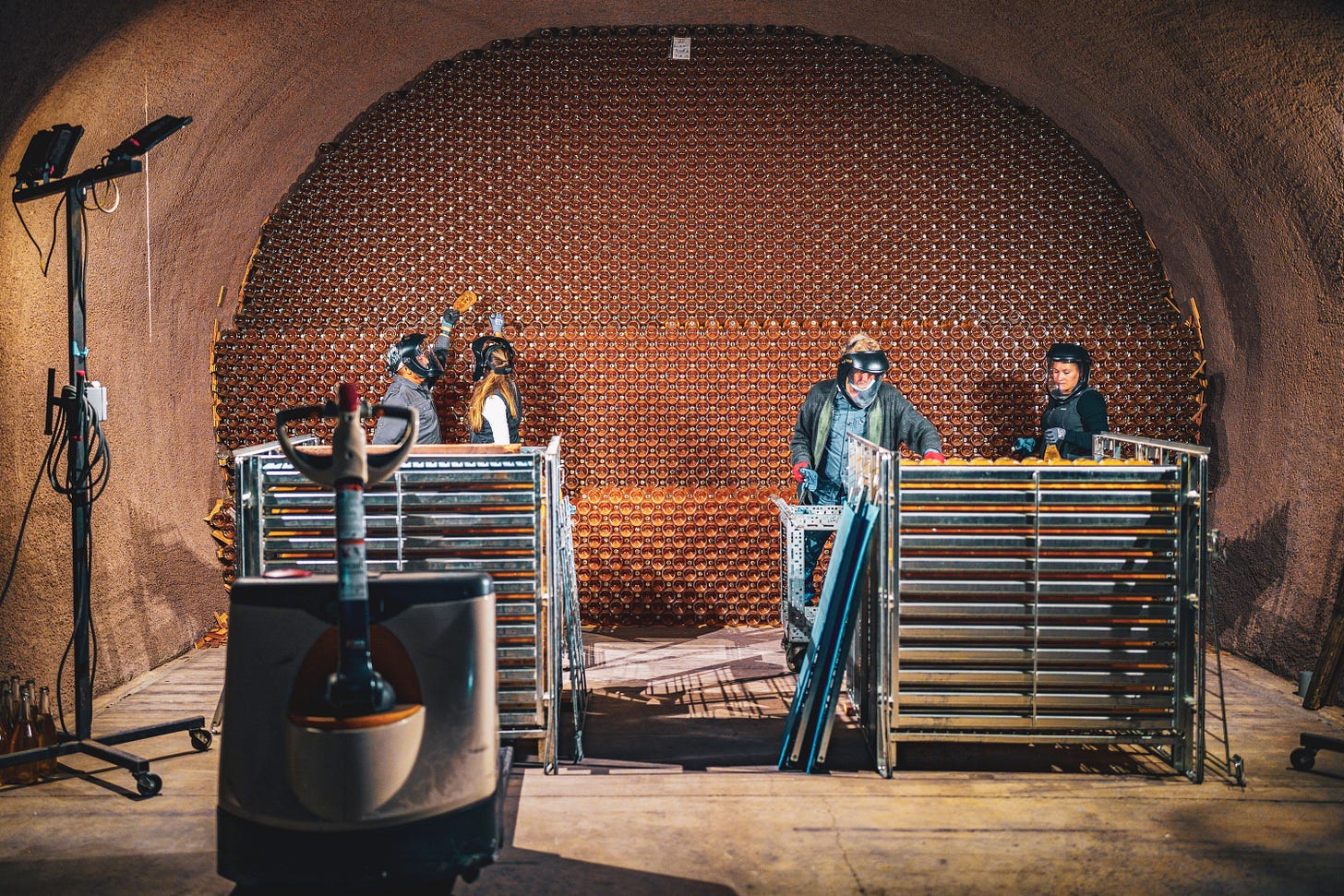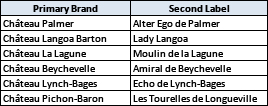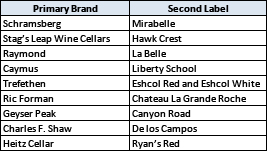NAPA VALLEY, Calif. — Unless you are so fixated on having wine labels that drip with history — with names such as Heitz, Caymus or Grace — and have a budget to support this obsession, you might be among the millions who are looking for a good bottle of wine that doesn’t require a second mortgage. Not to be too optimistic, but your time is here.
An article I read about the weakness that has recently devastated many areas of the wine business in California was little more than a teaser. Things are worse than mentioned in that story, so much so that everyone connected with wine is now completely convinced that we are in for at least two years of austerity.
Sales of wine have slowed so considerably that normal channels of distribution are clogged, wineries are sitting on case-good inventories that cannot be moved, discounting is being considered for literally hundreds of wines and almost no one has a cogent solution other than waiting it out, cognizant that we face a grim prospect of it all getting even worse before it gets better.
What this all portends is a significant shift we soon will see from branded products to private labels, most of which will show up in stores that carry significant inventories of wine. At one time, almost all of the brands that stores carried were recognizable. But the private label, which actually began in the early 1970s, has recently become an outlet for some of the previously high-quality products that simply couldn’t be sold at higher prices.
“Second” wines almost always sell for a lot less.
The basic strategy behind them was to make simple wines, label them with the name of the store and sell them at low prices. One of the earliest to do this was Ernie Van Asperen, who operated more than 80 Ernie’s Liquor stores in the Bay Area. His Round Hill wines, which began production in 1978, soon led to a secondary brand called, simply, Ernie’s. They were sold exclusively in his own stores.
Soon, however, it was evident that it was feasible to put individual labels on modestly made wine for other clients, including restaurants that would have the name of the proprietor or the café on the label, implying that the restaurant actually made the wine. It was a harmless fib, and the tactic caught on with some wine-savvy restaurants. Private label wines were inexpensive, and restaurants and retailers could make significant profits from them.
However, rarely were these wines made from the best vineyards. “Second label” wines were slightly lower in quality. (A few may still be around.) Some retailers called them companion labels. Frequently they were made from some of the same vineyards that produced the estate wine, but later bulk wine was added.
This idea of a “second brand” has been common practice in Bordeaux for decades. Many “second” wines are produced from either younger vines or from areas of the property that are not as prestigious as better areas. One of the best seconds in France is called Les Forts de Latour, the second label of Château Latour. One of the most prestigious of these seconds is Château Margaux’s Pavillon Rouge. Here are a few Bordeaux seconds:
A number of Bordeaux chateaus also produce “third labels” that are sold for even less money, and some offer excellent values. Similarly, many of the California seconds also once made excellent values. Second labels were most popular in an early 1980s. A few California seconds:
Early in the retail game Trader Joe’s stores in Southern California began to develop a strong relationship with several wineries, most notably in the Napa Valley, and began to sell wines under the Trader Joe’s label that were produced by wineries that had excess wine to their program and were willing to sell the wine direct to retailers. Outside of Trader Joe’s, there were very few stores interested in programs of this kind.
About 1976, I heard that my local Trader Joe’s store in the San Fernando Valley was doing an in-house blind tasting of wines that were being considered for the Trader Joe’s brand. It was for employees only. After pestering the store manager, I was finally told I could taste with the staff. The following day at 11 a.m. I joined a dozen staff members in a small room.
Facing us were 20-odd screw-capped lab bottles, all in brown paper bags. Conducting this session was Joe Coulombe, founder of the chain in 1967. At the time, Coulombe had just five stores, two of them still called Pronto Markets. The candidate wines trying to get into the nascent Trader Joe’s wine program were blended reds. The winner would be labeled “Burgundy” and would sell for $1.59 or so.
According to the rumor, the major wineries offering wines to the company were Simi Winery, Foppiano, Sebastiani and Heitz. In most instances, Coulombe intended to sell the wines for roughly $2 a bottle. Coulombe was ahead of his time. He knew that wineries often made more wine than they needed and would be happy to sell “overages” if retailers agreed to keep their names a secret. He was happy to take credit for the top-flight bargains he offered.
Over the decades, I have seen this work in numerous other ways with so-called “private label” wines that included imported wines. Indeed, in January 2011 I reported on one such idea — a direct import of bulk wines from Australia that was bottled in Northern California and sold on an “extreme bargain” basis.
The importer quoted in that article was Bruce Cunningham of AW Direct Wines in Novato, an Australian whose company name appeared on lower-priced wines that usually sold for less than $5. Many were sold at Grocery Outlet stores. Other similar programs involved large retailers seeking to develop house brands. They contracted with large wineries to make wine for them.
In some cases the wines are a product of the bulk market and thus can vary from year to year. Recently I tried some excellent wines from Trader Joe’s. Most of the best TJ wines came from France. Few were of A+ quality, but prices were so extremely low that I could not help but wonder how California wineries could compete.
The only drawback is consistency. With more than 570 TJ’s stores nationally, Trader Joe’s might not be able to offer the exact same wines in every store, but the higher quality of many of the TJ imports points to the fact that even if the company is working with huge French cooperative wineries, the caliber of winemaking around the world has improved so much that better-quality products can be had at low prices.
One Central Coast winemaker I spoke with who works on many Trader Joe’s projects told me that the arrangement he has with TJ’s is beneficial for both companies. He said he can arrange to buy huge amounts of grapes each year, knowing that he will be supplying nearly 600 stores, and the more fruit he buys, the lower his average costs become.
“[The arrangement] also enables us to have the right technology and the right equipment to improve all our wines,” he said. Trader Joe’s appears happy with the results, he said, adding that his TJ’s “handshake agreement” has allowed him to form strong relationships with growers in various vineyard companies south of San Francisco. Such wines usually use the Central Coast appellation, which includes some prestigious vineyards in Santa Barbara County.
In my 1970s blind tastings with the Trader Joe crew, at one event I liked one red wine better than the rest. It turned out of be a Barbera blend made by Burgess Cellars that had superb balancing acidity. Many other judges also liked the wine. However, Coulombe ended up choosing a cabernet blend from Raymond, saying it would sell a little faster. He probably was correct. He was a masterful marketer.
The recent Chapter 11 bankruptcy filing by Vintage Wine Estates, due in part to extremely slow sales of wine, has caused more than 30 of its brands’ products to become extremely difficult to sell. Among the VWE brands are Girard, Swanson, Layer Cake, Clos Pegase, B.R. Cohn, Viansa, Windsor Vineyards and Laetitia. Industry analysts say some of these products now may face deep discounting as the company reorganizes.
Berger’s Wine Discovery of the Week
Nonvintage Mirabelle Brut Rosé, North Coast ($31): This handsome bubbly offers fresh notes of strawberry and floral aromas, a relatively rich entry and a soft, perfectly balanced finish. This beautiful second-label sparkling wine from Schramsberg is not quite as classic as the primary brand’s superb rosé bubbly, but is more broadly appealing and a good value in a category that seems to have avoided some of the slowdown in wine sales.
If today’s story captured your interest, explore these related articles:
Dan Berger’s Wine Chronicles: Less Is More
Dan Berger’s Wine Chronicles: Napa and Sonoma as True Vinous Siblings
Dan Berger’s Wine Chronicles: The Nostalgia and Nonsense of Barrel Tastings
Dan Berger’s Wine Chronicles: The Evolution and Art of Winemaking
Dan Berger’s Wine Chronicles: How Wine Is Packaged Can Affect Its Quality
Dan Berger has been writing about wine since 1975.









Wouldn't their Sea Urchin be more similar to the Mirabelle Rose mentioned here? Where to purchase.
If you enjoy the Schramsberg second label, I recommend Carboniste’s sparkling Albariño (the octopus)! Delish and around the same price point as the Mirabelle.